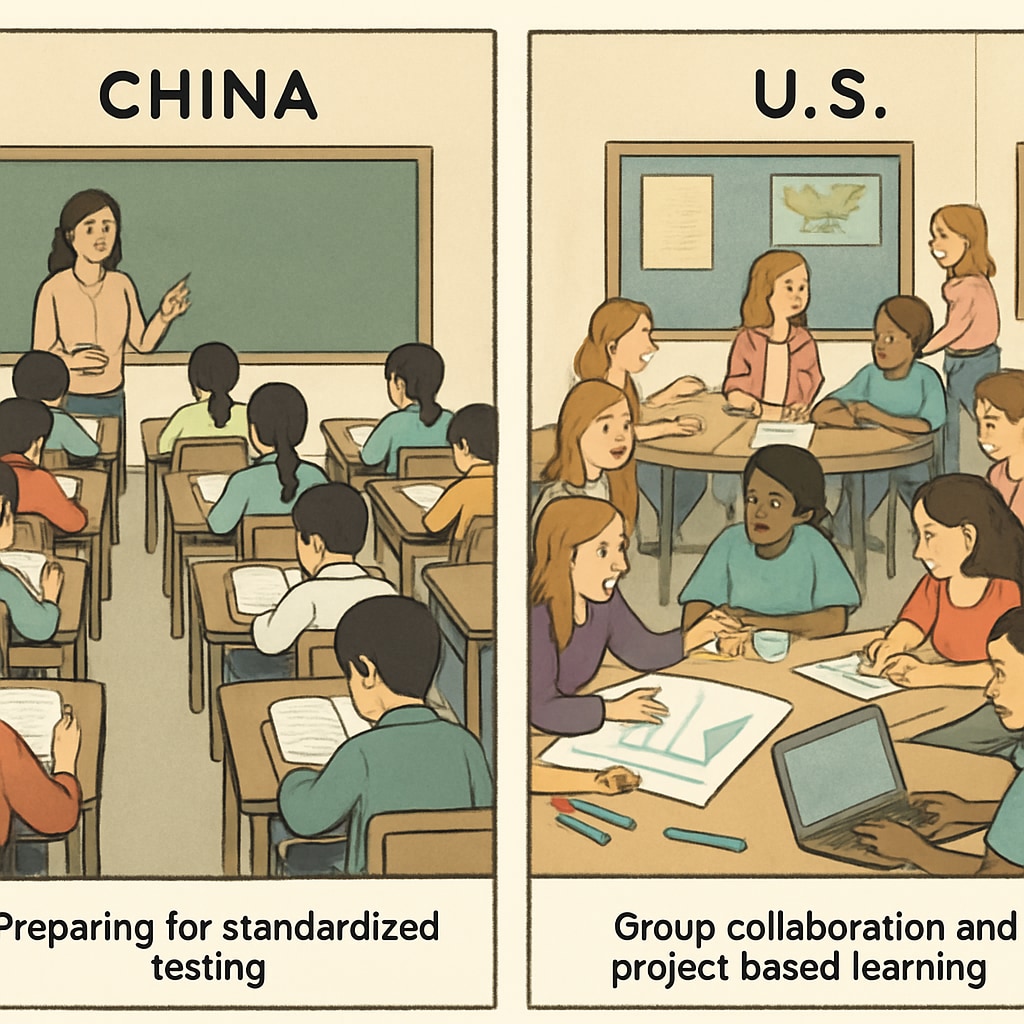The educational systems in the United States and China display profound contrasts in their core values and methodologies, shaping unique paths for student development. With “standardized testing” and “educational equality” at the forefront of this discussion, understanding these differences helps uncover the cultural and societal foundations behind these models. While the U.S. increasingly emphasizes inclusivity and equal opportunities, China remains committed to rigorous, merit-based systems that prioritize excellence. These divergent approaches reveal the complexities of balancing individual achievement and collective growth.
Standardization vs. Flexibility: Examining Educational Methods
One of the most significant differences between U.S. and Chinese education systems lies in their approach to standardization. In China, standardized testing is the cornerstone of the education system. Exams such as the Gaokao (college entrance exam) serve as crucial filters for higher education opportunities. This highly competitive structure underscores China’s focus on precision and measurable academic excellence.
In contrast, the United States has shifted toward flexibility and inclusivity in education. While standardized tests like the SAT and ACT are still important, many schools adopt broader evaluative criteria, including extracurricular involvement and personal essays. This approach aligns with the U.S. ethos of fostering creativity and individuality alongside academic achievement.

Equality vs. Elitism: The Core Values of Education
Another key aspect of this comparison is the differing emphasis on equality versus elitism. In the United States, the educational system strives to provide equitable access to resources and opportunities. Programs such as affirmative action aim to level the playing field for marginalized communities, ensuring that education serves as a tool for social mobility.
China, on the other hand, prioritizes meritocracy. The rigorous selection process for prestigious universities rewards those who excel academically, often at the expense of broader inclusivity. While this system creates a pipeline of highly skilled professionals, it may overlook the potential of students who excel in non-traditional domains.

Cultural Foundations Behind Educational Models
The differences in U.S. and Chinese educational systems are deeply rooted in their respective cultural and societal norms. China’s focus on standardization and meritocracy reflects a collectivist culture that values discipline, hard work, and measurable success. Historically, education has been seen as a direct pathway to upward mobility and societal contribution.
On the other hand, the United States champions individuality and diversity, which are central to its cultural identity. By emphasizing equality and holistic development, the U.S. system seeks to cultivate students who are not only academically capable but also socially adaptable and innovative. This approach mirrors the American ideal of pursuing personal dreams and breaking barriers.
The Impact on Student Development
Ultimately, these educational philosophies profoundly shape student growth. In China, students are often equipped with exceptional technical skills and a deep understanding of their subjects, preparing them for specialized careers. However, the intense focus on academics can sometimes limit opportunities for creativity and emotional development.
In the United States, students benefit from an environment that encourages diverse talents and personal exploration. While this leads to well-rounded individuals, critics argue that the lack of standardization can sometimes result in uneven academic preparedness.
Both systems offer valuable lessons: China’s meritocratic rigor ensures excellence, while the U.S. model fosters innovation and inclusivity. The key lies in finding a balance that incorporates the strengths of both approaches.
Readability guidance: Short paragraphs and subheadings enhance clarity. Lists can summarize key points for easier comprehension. Overuse of passive voice and lengthy sentences is avoided to maintain reader engagement.


